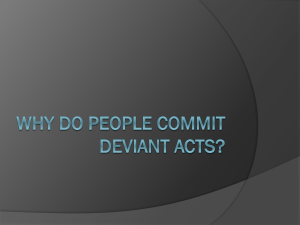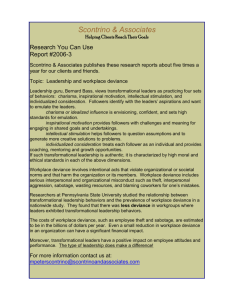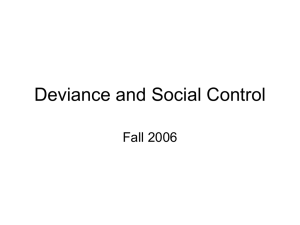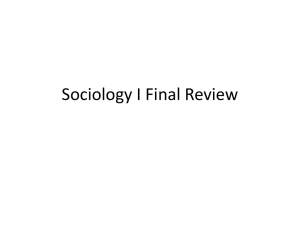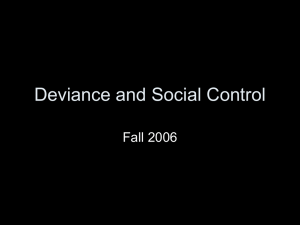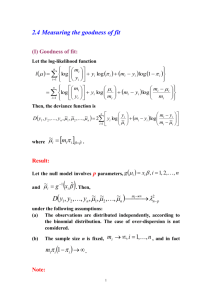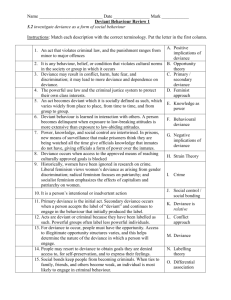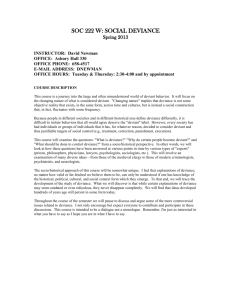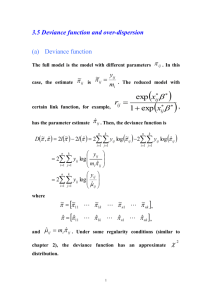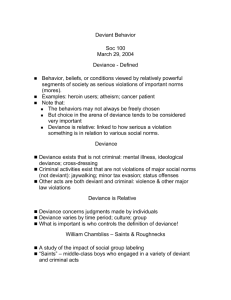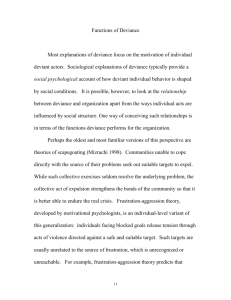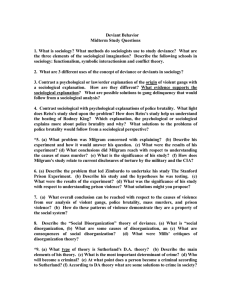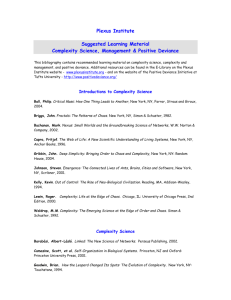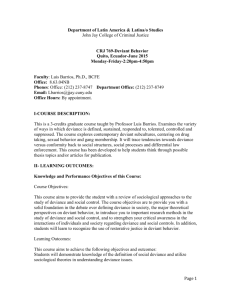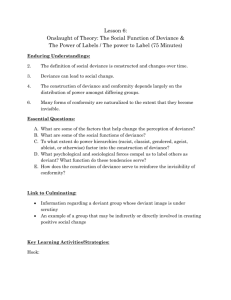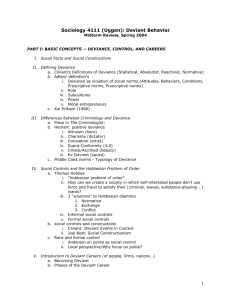Institution Ivy Tech Community College Course Title Introduction to
advertisement
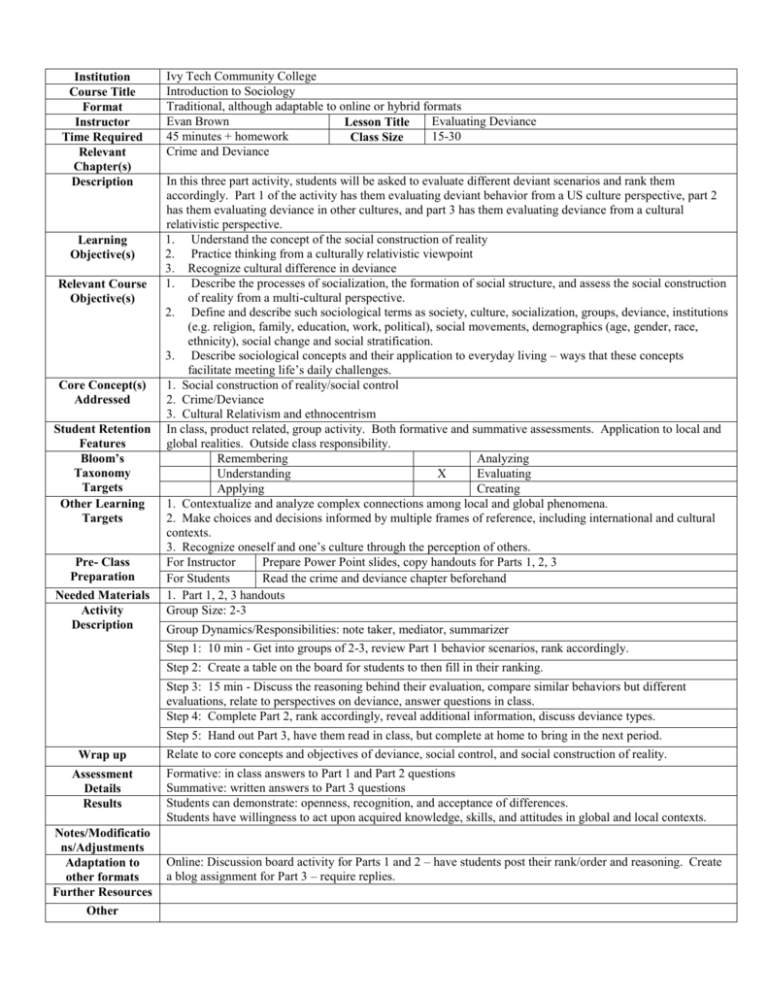
Institution Course Title Format Instructor Time Required Relevant Chapter(s) Description Learning Objective(s) Relevant Course Objective(s) Core Concept(s) Addressed Student Retention Features Bloom’s Taxonomy Targets Other Learning Targets Pre- Class Preparation Needed Materials Activity Description Ivy Tech Community College Introduction to Sociology Traditional, although adaptable to online or hybrid formats Evan Brown Evaluating Deviance Lesson Title 45 minutes + homework 15-30 Class Size Crime and Deviance In this three part activity, students will be asked to evaluate different deviant scenarios and rank them accordingly. Part 1 of the activity has them evaluating deviant behavior from a US culture perspective, part 2 has them evaluating deviance in other cultures, and part 3 has them evaluating deviance from a cultural relativistic perspective. 1. Understand the concept of the social construction of reality 2. Practice thinking from a culturally relativistic viewpoint 3. Recognize cultural difference in deviance 1. Describe the processes of socialization, the formation of social structure, and assess the social construction of reality from a multi-cultural perspective. 2. Define and describe such sociological terms as society, culture, socialization, groups, deviance, institutions (e.g. religion, family, education, work, political), social movements, demographics (age, gender, race, ethnicity), social change and social stratification. 3. Describe sociological concepts and their application to everyday living – ways that these concepts facilitate meeting life’s daily challenges. 1. Social construction of reality/social control 2. Crime/Deviance 3. Cultural Relativism and ethnocentrism In class, product related, group activity. Both formative and summative assessments. Application to local and global realities. Outside class responsibility. Remembering Analyzing Understanding X Evaluating Applying Creating 1. Contextualize and analyze complex connections among local and global phenomena. 2. Make choices and decisions informed by multiple frames of reference, including international and cultural contexts. 3. Recognize oneself and one’s culture through the perception of others. For Instructor Prepare Power Point slides, copy handouts for Parts 1, 2, 3 For Students Read the crime and deviance chapter beforehand 1. Part 1, 2, 3 handouts Group Size: 2-3 Group Dynamics/Responsibilities: note taker, mediator, summarizer Step 1: 10 min - Get into groups of 2-3, review Part 1 behavior scenarios, rank accordingly. Step 2: Create a table on the board for students to then fill in their ranking. Step 3: 15 min - Discuss the reasoning behind their evaluation, compare similar behaviors but different evaluations, relate to perspectives on deviance, answer questions in class. Step 4: Complete Part 2, rank accordingly, reveal additional information, discuss deviance types. Step 5: Hand out Part 3, have them read in class, but complete at home to bring in the next period. Wrap up Assessment Details Results Notes/Modificatio ns/Adjustments Adaptation to other formats Further Resources Other Relate to core concepts and objectives of deviance, social control, and social construction of reality. Formative: in class answers to Part 1 and Part 2 questions Summative: written answers to Part 3 questions Students can demonstrate: openness, recognition, and acceptance of differences. Students have willingness to act upon acquired knowledge, skills, and attitudes in global and local contexts. Online: Discussion board activity for Parts 1 and 2 – have students post their rank/order and reasoning. Create a blog assignment for Part 3 – require replies.




